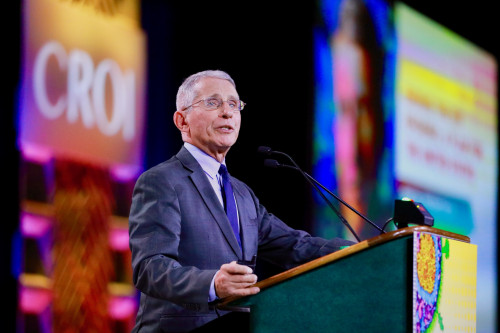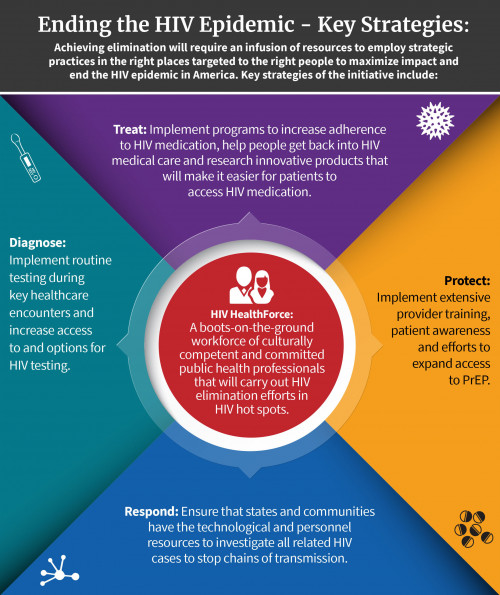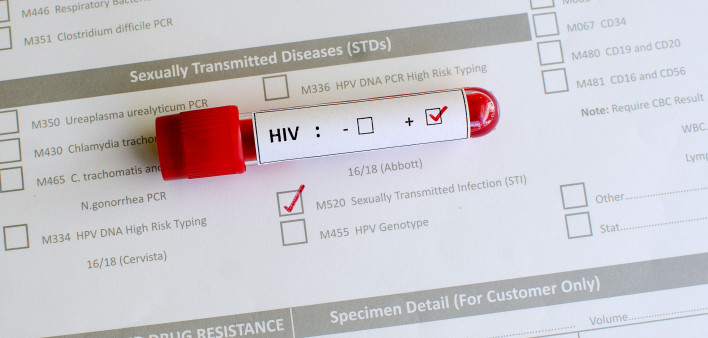If by 2025, the United States dramatically increased the proportion of people with HIV who are on antiretroviral (ARV) treatment and virally suppressed and about doubled the number of people on Truvada (tenofovir disoproxil fumarate/emtricitabine) as pre-exposure prophylaxis (PrEP), the annual transmission rate could decline by about 67 percent by 2030.
The federal government’s new plan to fight the epidemic, designed by leaders in the Department of Health and Human Services and announced by Trump during his February State of the Union, calls for a 90 percent reduction in annual new HIV infections between 2020 and 2030.

Anthony Fauci, head of the National Institute of Allergy & Infectious Diseases, speaking about the federal plan to combat HIV, which he has co-designed, at the Conference on Retroviruses and Opportunistic Infections In Seattle in MarchBenjamin Ryan
Publishing their findings in AIDS and Behavior, researchers analyzed recently updated Centers for Disease Control and Prevention (CDC) data covering 2010 to 2015 on the estimated number of people living with HIV, the number of people diagnosed with the virus, the number of people retained in medical care for the virus, the number of people with the virus who are on ARVs and virally suppressed (meaning they have an undetectable viral load), the estimated number of HIV transmissions each year and the number of annual deaths among those with the virus. They also considered 2009 CDC data regarding the estimated rates of HIV transmission via those who are undiagnosed, diagnosed but not retained in care, retained in care but not virally suppressed and virally suppressed. (The CDC has since updated these estimates.)

The cornerstones of the new federal plan to combat HIVCourtesy of HIV.gov
The study authors fed these data into mathematical models to estimate the epidemic’s trajectory after 2018, comparing how improvements in the rates of diagnosis, retention into medical care and successful treatment of HIV among U.S. residents living with the virus, as well as uptake of PrEP, would change the trajectory of the epidemic versus no changes in such rates.
The most recent data included in the model indicated that 87 percent of the HIV population is diagnosed, 68.6 percent of the diagnosed population is in care for the virus and 89.9 percent of those in care are virally suppressed (meaning that 54 percent of the U.S. HIV population is virally suppressed). The researchers estimated that if such figures did not change over time, the annual number of new infections would increase from 41,600 in 2018 to 55,100 in 2030 and cumulative new infections during that that period would total 622,900.
The CDC recently estimated, based on 2016 data, that 51 percent of the HIV population is virally suppressed. Agency researchers also recently estimated that, following a modest approximately five-year decline, the annual HIV transmission rate leveled off at about 38,700 new cases per year between 2013 and 2016.

CDC
According to Gilead Sciences’ most recent estimate, 202,000 people are currently taking PrEP. Putting that figure into context, the CDC hasestimatedthat perhaps 1.1 million people are at significant risk for HIV and therefore stand to benefit from taking PrEP. More than 90 percent of PrEP users are men who have sex with men (MSM), and the CDC estimates that 814,000 MSM are good candidates for Truvada as prevention. About 70 percent of new HIV cases are among MSM. Note that not all those taking PrEP are necessarily at high risk for HIV per the CDC’s definitions, although considerable research has indicated that people who go on Truvada for prevention do indeed tend to fall into the high-risk category.

CDC
The authors of the new study considered a highly aspirational scenario in which by 2025: 95 percent of the HIV population was diagnosed, 95 percent of that group was in medical care and 95 percent of that group was virally suppressed (meaning that about 86 percent of the HIV population would be virally suppressed); about 40 percent of all those who stand to benefit from PrEP were on it, and 69 percent of those people were adhering to the drug regimen at a high rate; and other targeted interventions were used to prevent HIV transmission.
The modeling indicated that this combination of factors would drive down the annual HIV infection rate by an estimated 67 percent between 2018 and 2030, to 13,700 new cases during the latter year.
In such a scenario, the number of people living with the virus would start to contract in 2025, because at that point the death rate would exceed the new infection rate.
“Although the HIV incidence reduction goal of 90 percent as unveiled in the 2019 State of the Union address is likely unachievable with the current intervention tool kit, it is possible to begin to substantially reduce HIV prevalence in the next decade with sufficient investments and innovation,” the study authors concluded.
“It is important to set HIV prevention goals that are ambitious but realistic,” Heather Bradley, PhD, lead author of the study and assistant professor in the School of Public Health at Georgia State University in Atlanta, said in a press release. “We know that treating people living with HIV greatly improves health and also prevents transmission of HIV infection to others. However, treating enough people to meaningfully reduce new HIV infections will require us to confront issues like poverty, unstable housing and mental health conditions that keep people living with HIV from accessing care.”
To read the study, click here.
To read a press release about the study, click here.







1 Comment
1 Comment